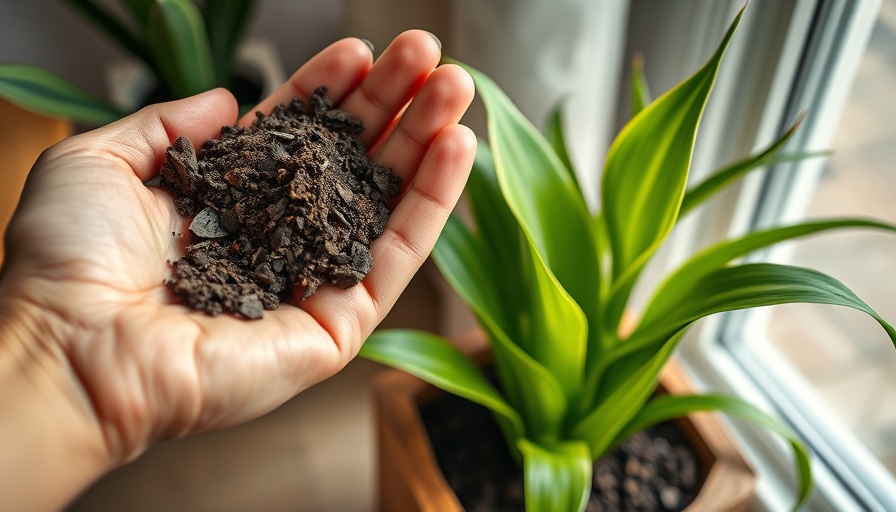
Creating the Perfect Houseplant Soil: Why It Matters
When it comes to nurturing your indoor plants, the importance of using the proper potting soil cannot be overstated. Healthy houseplants require a balanced environment that mimics the natural conditions of their growth, which is why crafting a personalized soil mix can significantly enhance their well-being. A foundation built on sustainable and organic materials will ensure that your green companions not only survive but thrive—transforming your living space into a lush sanctuary.
What Makes an Ideal Potting Mix?
The perfect potting mix is a blend that offers moisture retention, aeration, and efficient drainage—three crucial elements that are often missing from typical garden soil. For instance, many gardeners may wonder, "Can I just use outdoor soil for my houseplants?" The short answer is no. While outdoor soil is rich in nutrients, it also harbors pests and pathogens that can wreak havoc indoors. Instead, using a specialized potting mix that includes ingredients like compost, perlite, and vermiculite makes for an optimal growing environment.
Step-by-Step Recipe for Houseplant Soil
Here’s a simple recipe that combines six organic ingredients to create your very own houseplant soil:
- 2 parts sterilized compost
- 2 parts peat moss alternative (like coconut coir)
- 1 part worm castings
- 1 part perlite
- 1 part vermiculite
- 1 part sand
Mix these ingredients thoroughly, ensuring to hydrate them before you plant for better consistency and moisture distribution.
Why Compost Reigns Supreme
Compost is the cornerstone of any healthy soil mix. It not only enriches the soil with nutrients but also improves the microbial life necessary for optimal plant growth. Making your own compost may take time, but the reward is well worth it. Sourcing quality compost from a reputable supplier can also propel your plants to new heights.
Pest Prevention: Keep Your Plants Safe
One of the foremost concerns when working with soil mixtures is pest prevention. Using sterile ingredients in your mix ensures that you keep unwanted organisms at bay, especially notorious nuisances like fungus gnats. Nutrient-rich compost may seem inviting to all sorts of critters, but proper sterilization methods will mitigate these struggles before they begin.
Understanding pH Levels for Plant Health
The pH level of your potting mix plays a critical role in nutrient availability. Most houseplants prefer a slightly acidic to neutral pH (around 6.0 to 7.0). It’s worthwhile to test your mix periodically, adjusting with lime (to raise pH) or a sulfur base (to lower it) to create that ideal environment for your flourishing plants.
The Emotional Connection: Plants and Well-Being
Houseplants not only enhance the aesthetics of our living spaces but also contribute to our emotional health. Engaging with nature has been shown to reduce stress and improve air quality. As we cultivate a nurturing environment for our green friends, we also foster a deeper connection with the natural world, reaffirming the importance of sustainable practices.
Getting Started with Indoor Gardening
Starting your gardening journey might feel overwhelming, but incorporating these tips will ease your way into the world of houseplants. Equip yourself with the right tools, knowledge, and, of course, a top-quality potting mix. Consider taking a mini course or reading more about indoor gardening techniques to grow a thriving, healthy indoor garden.
In conclusion, investing the time to create a well-balanced houseplant soil is a small step that leads to the joyful flourishing of your indoor plants. Whether you’re a seasoned gardener or just starting, putting in the effort now will result in lush greenery and a happier home.
 Add Row
Add Row  Add
Add 




Write A Comment